MedievalReporter.com
Covering history's most marvelous millennium
Join our newsletter!

Covering history's most marvelous millennium
Covering history's most marvelous millennium
The medieval Saxons were a Germanic people who greatly influenced the Early Middle Ages. Their legacy, however, is hard to pin down. Many people confuse them with either the Anglo-Saxons (not quite the same thing, as we’ll explain), or the inhabitants of present-day Saxony, a federated state in the east of modern Germany (which is not in the ancient heartland of the Saxons).
We’ll clear this all up for you.
This is a short intro from our Medieval Guidebook. Dive deeper into the subject by reading our articles about it.
No.
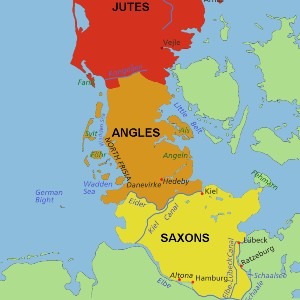
The most famous feat of the Saxons was their steady migration to Great Britain during the 5th and 6th centuries CE. The (Western) Roman Empire was contracting at the time and Britannia was the first province the Romans irreversibly gave up on – around 410 CE. Together with the Angles and the Jutes, the Saxons moved into this power vacuum. Whilst on the island, they intermarried and mingled with the Angles (and Jutes) for centuries, eventually creating the Anglo-Saxons. Even later, they would lend their name to the geographical concept of Britannia minus Wales, better known as “England” – after the Angles.
Fortunately for us, they named the country after the Angles and not the Saxons, otherwise England would now be called Saxony – and the confusion with the modern German state even greater. During the Early Middle Ages, the Anglo-Saxons fused with the native population as well: the Celtic Britons, or Brittonic Celts – as you wish. These were the inhabitants of the island before even the Romans came, giving it its name of Great Britain – not be confused with England!
But as famous as their migration across the North Sea is, the peculiar thing about the Saxons is that most of them stayed in their heartland in present-day northern Germany. Whereas most Germanic tribes – like the Franks, Goths, Burgundians, Lombards, and so on – preferred to inject themselves into core Roman territories, a lot of Saxons instead stayed stay east of the Rhine river. There they ran a realm known as Old Saxony, of which the leadership was in the hands of “ealdormen” who elected temporary kings only in times of war. Their society was strictly hierarchical: the ealdormen and their families formed a warrior nobility that dominated the castes of freemen and serfs under them. Intermarriage was strictly forbidden and the weregild (“man price”, compare: werewolf – “man-wolf”) for a noble was eight times higher than for a serf.
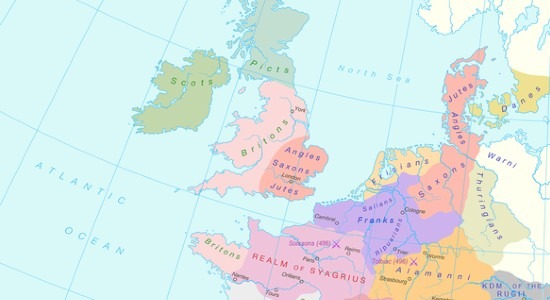
The continental Saxons (to be clear: this means not the Anglo-Saxons) living in Old Saxony actually conducted near-constant warfare with the Danes and Vikings to their north. Over the course of the Early Middle Ages, the Danes even built a humongous wall to keep the pesky Saxons out. As Old Saxony basically occupied the “doorstep” to Scandinavia, this Great Wall of Denmark would grow into the border between Central and Northern Europe.
With their northern frontier closed off, the Saxons directed their martial energy to the south, against the Franks. Under their king Clovis and his descendants, the Franks had conquered a great kingdom, stretching from the Pyrenees to the Rhine. Meanwhile, the Franks had become christian – something the fiercely pagan Saxons didn’t like. So, when Clovis’s great-grandson died in 555 CE, the Saxons declared war. The conflict failed to deliver a clear resolution and, instead, the Frankish-Saxon border became a hostile frontier zone for the greater part of two centuries. In 768 CE, this all changed when the greatest Frank of all time, Charlemagne, became king.
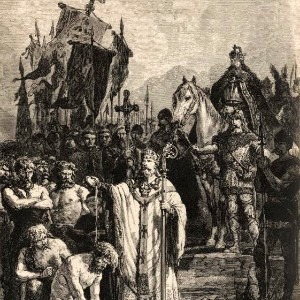
Charlemagne launched the Saxon Wars, a campaign with the specific aim to subjugate and – most of all – christianize once and for those annoying Saxons. He succeeded in the end, but only after 32 years – even mighty Charlemagne had trouble subduing the Saxons. The Saxon Wars ultimately destroyed the realm of Old Saxony, supplanting it with the Duchy of Saxony on the feudal, Frankish model. Charlemagne’s empire eventually disintegrated under the leadership of weak monarchs: a century later a Frankish king was forced to buy off a band of Vikings with a huge strip of land south of The Channel, which they promptly settled. On account of their northern heritage, its inhabitants became known as Normans; the region, of course, as Normandy – neither having anything to do with the Saxons.
– advertisement –
– article continues below –
With the Frankish Empire in tatters, the Saxons were free to do as they wished once more. Charlemagne’s empire split into three parts over the course of the 9th century. The eastern part became the Kingdom of Germany, with the Duchy of Saxony as one of its most important parts. Harking back to their Germanic traditions of elective monarchy, Saxony became one of five German “stem duchies”. Its leaders had to right to vote the next German king into office. And lo and behold, already in 919 CE, a Saxon duke called Henry won the election and managed to become King of Germany.
This was not what Charlemagne had fought so hard for, but – in a further twist of irony – the Saxons flipped the script again. Once in possession of the royal position, they did away with the elective monarchy. Henry’s son Otto succeeded him as King of Germany and even went one step further. In 962 CE, he had himself crowned Holy Roman Emperor and founded the imperial Saxon dynasty. No longer did a Frank hold the highest office in Western Europe; after Otto I “the Great”, four Saxon successors would wear the imperial crown.
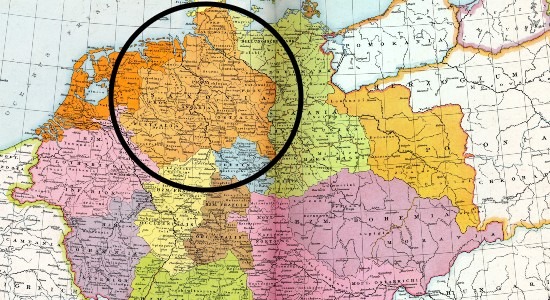
The Saxons already lost imperial power in 1024, when their last emperor died childless. But the Holy Roman Empire that they founded would live on under other dynasties until 1806 (when another emperor – one such Napoleon Bonaparte – destroyed it). The Duchy of Saxony would not live to see the day, as it was officially dismembered in 1180 after losing a civil war against emperor Frederick Barbarossa. Its various successor states disputed the ducal title, and with it, the prestige of being a stem duchy because the imperial election had been reintroduced after the Saxon dynasty. Ultimately, in a great reorganization called the Golden Bull, emperor Charles reorganized the Empire’s voting rights and awarded a Saxon fringe state in the east electoral status.
That’s why the Electorate of Saxony that this mini-state grew into (and its successors, the 19th-century Kingdom of Saxony and the modern Free State of Saxony) is located in the east, whereas Old Saxony was in the west of present-day Germany.
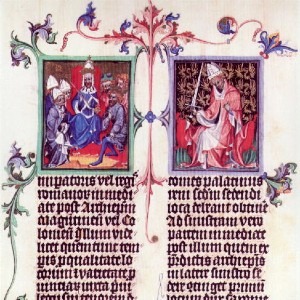
Disclosure: we work hard to provide you with exclusive medieval reports and guides. To make the Middle Ages accessible to everybody, we’d like this information to remain FREE. Therefore, some of the links below are affiliate links, meaning – at no additional cost to you – we will earn a small compensation if you click through.
Featured Image Credit: RobbieMcSweeney (deviantART)
Grab a short intro on another civilization from our Medieval Guidebook.